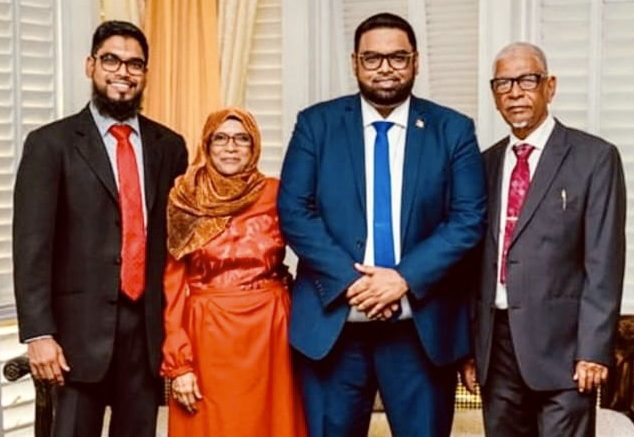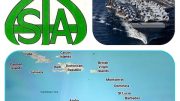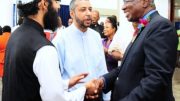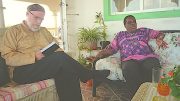| Zurawan (Zahur) | Gulzari’s father (President’s great-great-great-great grandfather) |
| Gulzari & Baig Khan | Dildar’s parents (President’s great-great-great parents) |
| Dildar | Hameed’s father (President’s great-great-grandfather) |
| Hameed | Hafizan’s father (President’s great-grandfather) |
| Hafizan (Shira) | Bibi Shariman’s Mother (President’s grandmother) |
| Bibi Shariman | President’s Mother |
| Mohamed Irfaan Ali | President of Guyana |
On the 25 of September 1894, Gulzari (Uljairi) and five of her children, Daulat, 15 (wife Nasiba, 16), Din Mohamad, 11, Dildar, 9, Hubdar, 7, and Pachoo, 3 (Bacho means child, seems there was a misunderstanding of her name) left the Port of Kolkata on “The Rhine” for British Guiana, now independent Guyana. The mother’s name was incorrectly written like most immigrants, and was likely Gulzari. Due to the regional accent, Z is pronounced J in her place of origin.
The current President of Guyana, Mohamed Irfaan Ali, is a descendant of this migration. He is the 3rd great-grandson of Gulzari. This means that his family tree has a large span in Guyana today. This was a unique immigration story of an entire family of 6 migrating to Guyana.
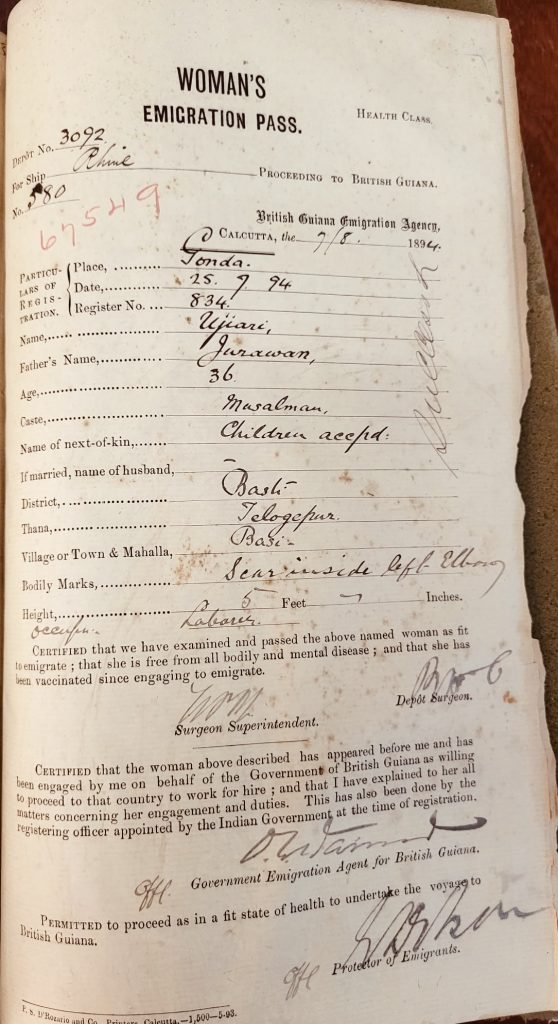
Gulzari’s Emigration Pass
The family was originally from the state of Uttar Pradesh (then known as the United Provinces), specifically from Basti, surrounded by Azamgarh, Lucknow, Baraich, Sultanpur, and Faizabad. These prominent Urdu and historically rich centres reached their zenith of Farsi and the Urdu Golden Age of Hindustan. It was also from these areas that many migrated to Guyana.
It was an unusual migration: a 36-year-old single mother, five children, a daughter-in-law, and no husband. The mother was unusually old among the ordinary immigrants to Guyana. What factors pushed Aama (Mom) and her family to Guyana?
We have yet to trace the absence of her husband, Baig Khan. Did the father of her children, the sole breadwinner, die of natural circumstances, pandemic, famine or communal tension in India, such that left Gulzari in misery that led her to Guyana? These situations were common in Uttar Pradesh and Bihar in British India.
There is no evidence that Gulzari remarried in Guyana and had more children in Success, Leguan. However, it is also possible that she had older children who could have already been married and had families in Uttar Pradesh, India.
In November of 1894, the family arrived in Guyana, where they were processed and sent to Plantation Success, Leguan. They didn’t allow the authorities to separate them. It wasn’t unusual at all to separate families. Aama again kept the family together with her dominant presence.
Interestingly, two decades earlier, in 1874, my great-great grandfather, Jahangeer Khan, his wife Meehrut, and two children arrived at Maryville Plantation, Leguan, from Kanpur, Uttar Pradesh. Thus, my search for my great grandfather, Phir Khan, born in 1887, brought me to Maryville, Leguan and to the home of Nazim Dildar, Hanif Dildar’s son. That then connected me to the virtual company of our late Bibi Safoora Shadick, who was an authority on the history of the Leguan families.
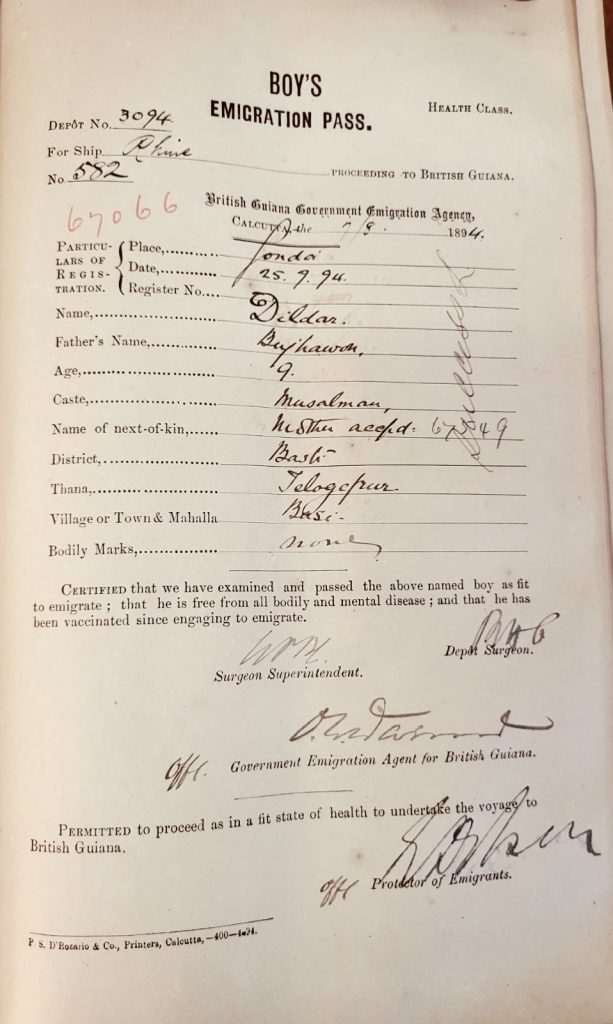
Dildar’s Emigration Pass
Safoora Deed related to me that when her grandmother Subrratan Khatoon lost her husband, Syed Mahmood, an Afghan, she married Dildar, who had lost his wife, Zahuran. Both pairs had children from their past marriages. They had one or two children, but all the children were raised as one blended family. Her mother, Mariam Begum, was one of those children.
Dildar was an excellent, hardworking husband and father. Another of his sons, Haniff, was the Imam of Maryville Masjid until his death,” says Ms Shadick.
“Irfaan spent all his school holidays with Shira and Ayube in Leguan. He calls her Maa. She lives with a son in Canada.”
Gulzari’s husband and father of her children, Baig Khan’s name, was misspelt on the immigration records as “Beghwan”. Gulzari was the daughter of Jurawan; again, this name was bastardized on immigration records ( Zahur). They were from Telogepur, Basti. Likely, J is really a Z, and that is a common pronunciation issue in this part of India.
Hence, Baig Khan was President Mohamed Irfaan Ali’s 3rd great-grandfather who didn’t make it to Guyana and was buried somewhere in Hindustan, likely in Uttar Pradesh.
For my research purpose, I narrow my study to Mrs Bibi Shariman Nisaw, who is from Dildar’s branch. Dildar Meah was her great-grandfather and the great-great-grandfather of President Mohamed Irfaan Ali.
Dildar would grow up at Success and marry Zahuran, who was locally born at Success in 1890. Zahuran parents were Khodabux (Khoda Baksh), who came to Guyana on the Sydenham in 1864. Her mother, Munneah, arrived in Guyana in 1869 on board the Umchester.
Dildar Meah had several children. Abdul Ghani (1912), Mariam (1915), Hazra (1920), Hanif(1924), Hameed (unknown birth year) and Bibi Shirah (1929). Saliman (1909) and Nazia (1917) died as infants. With Subrattan, he had Bibi Aisha (1930), who died as an infant also.
Hanif was married to Rafikan, and they had several children: Ashiq, Mirza, Suleiman and Nazim Dildar.
Gulzari Aama was a practicing Muslim. The children grew up in a solid Muslim household and which is credited to their mother, the indomitable Gulzari. One of Dildar’s sons, Hanif, was an Imam, and his grandson, Mohammed Nazim Dildar, is also the Imam at the said Masjid in Maryville, Leguan.
Hameed and Jamiran (Ronee Mamee) had several children, Sharifan, Hakiran, Hafizan(Shira), Nazir, and Sonson.
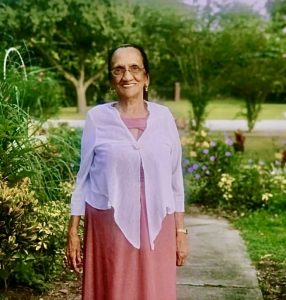
Hafizan Ayube, maternal grandmother (Nannie of President Irfaan Ali)
From Hafizan (Shira) Dildar, her husband, Ayube, was born Bibi Shariman Neshaw. Shariman, born at Leguan, would later marry Mr Mohamed Osman Ali.
From this union was born Mohamed Irfaan Ali, their second child and current President (Wazir-E- Azam) of Guyana. His presidency of Guyana is a triumph to the indomitable spirit of his great-great-great-grandmother, Gulzari Aama, a single mother of more than five children who migrated to Guyana in 1894 to save her family after her husband died.
Dildar’s daughter Hazra was married to Yusuf of Leguan, and their children are Shameer, Jamila, Farida and Bayban.
Yusuf’s sister, Ayesha, was married to my grandfather’s first cousin, Mohammad Abdul Rahaman Khan, Uncle Lama, born at Vergenoegen and settled in Bartica.
Besides Dildar, only one other sibling, Daulat, was found in Leguan and was married to Halima, an India-born national, after his wife Nasiba died. Dildar siblings may have lived and raised families in other parts of Guyana.
Shira Dildar Khatoon did acknowledge her grandfather’s brother Hubdar.
Terms Explain
Out of respect (Aadaab) to our elders and in our tradition and tehzeeb (civilization) I’ve used honorifics to address their them in this article. A legacy of our elders of Farsi and Urdu, and which we have lost today.
Khatoon = Lady
Begum = Mrs, Lady, Lady of Rank
Aama/Aame = Mother
Deed = Big sister
Mea = respected elder
“Learn your lineages to solidify your family ties. Verily, keeping family ties causes love among the kinship, enriches the wealth, and increases the lifespan.” Prophet Muhammad (upon whom be peace)
I want to acknowledge the tremendous efforts of Melissa Jones at Guyana’s National Archive, thank you, Melissa; your work made this piece possible.
